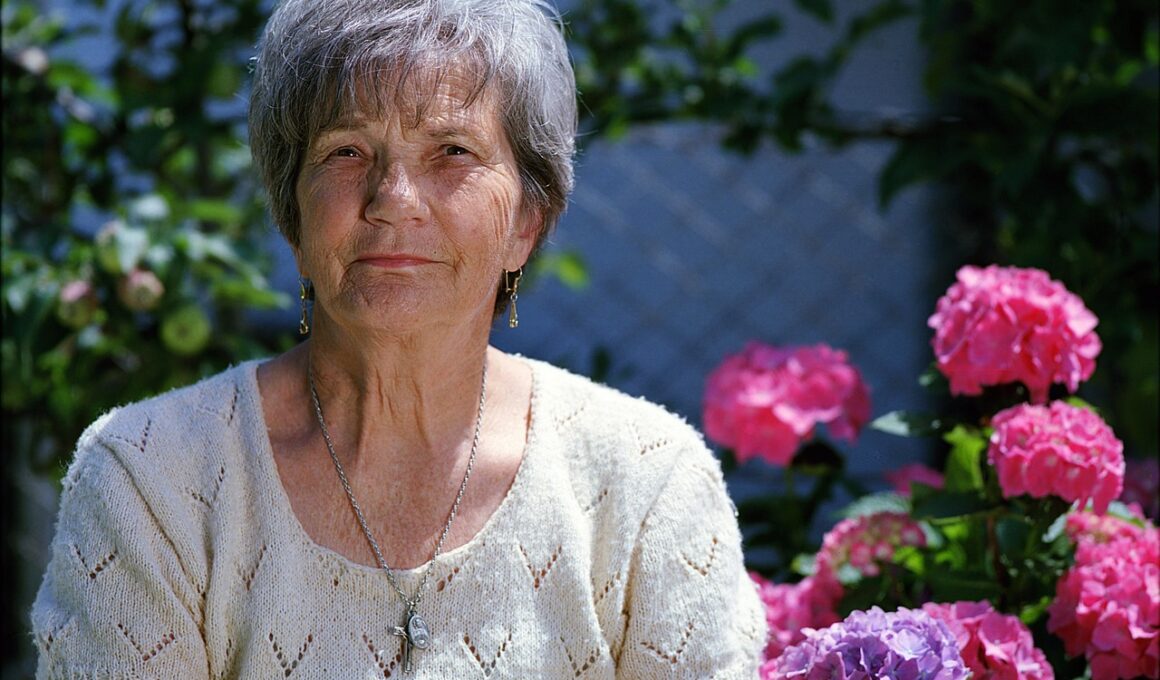Functional Training Warm-ups for Older Adults: Staying Safe and Effective
Functional training warm-ups are essential for older adults, as they help improve mobility, flexibility, and overall strength. To begin, it’s vital to create a routine that caters to individual needs and skills. A proper warm-up should gradually increase heart rate and prepare joints for physical activity. Incorporating movements that mimic daily tasks can enhance effectiveness. For instance, focusing on functional exercises, such as squats or lunges, can be particularly beneficial. Older adults should consider engaging in low-impact warm-up activities like walking or gentle cycling to raise body temperature. Gentle dynamic stretching exercises can also enhance range of motion. Each session should ideally begin with 5-10 minutes of light cardiovascular activity. When planning warm-ups, remember the importance of listening to your body. If discomfort arises, it’s essential to adjust accordingly. Choosing suitable footwear can also prevent injuries during warm-ups. Additionally, practicing breathing techniques can facilitate relaxation and prepare the body for exercise. Ultimately, a successful warm-up routine should focus on safety while effectively preparing older adults for their functional training session.
One key aspect to consider when designing warm-up routines is the incorporation of joint mobility exercises. For older adults, maintaining joint flexibility is crucial for preventing injuries. Incorporating gentle movements such as arm circles and wrist stretches can significantly enhance joint mobility. Additionally, ankle rolls are beneficial for improving stability. Engaging in these exercises before the main functional training session can help prepare the body for more challenging movements. It is crucial to include a combination of upper and lower body stretches for a holistic warm-up. Furthermore, using resistance bands can add variety to the warm-up routine. These bands can facilitate strength-building movements without heavy weights. When utilizing bands, ensure proper posture to avoid strain. Older adults might also benefit from foam rolling as part of their warm-up. Foam rollers can alleviate tension in key muscle groups and improve blood circulation. It’s important to maintain a comfortable pace and ensure that all movements are performed correctly. Mixing and matching different exercises will keep the warm-up exciting and engaging, promoting adherence to the program. Consistency in warm-up routines will undoubtedly enhance overall fitness levels.
Incorporating Balance Training into Warm-ups
Balancing exercises are an essential component of warm-ups for older adults. As people age, maintaining stability becomes increasingly crucial to prevent falls and injuries. Including specific balance training can be beneficial in enhancing proprioception and strengthening core muscles. Simple movements like standing on one leg or using a balance board can improve stability. These exercises can be integrated into the warm-up routine effectively. When starting these exercises, older adults should hold onto a sturdy object for support. Additionally, walking heel-to-toe is a fundamental way to challenge balance. Incorporating these elements can create a comprehensive warm-up routine that prepares the body effectively for exercise. Using yoga poses such as tree pose can also enhance balance while promoting relaxation. Retaining a focus on breath during these movements will add an element of mindfulness and calmness. The mind-body connection inherent in balance training can boost confidence and enhance awareness during workouts. Setting aside time for dedicated balance exercises during warm-ups is vital. By prioritizing such activities, older adults will foster a sense of security and functionality throughout their daily lives.
Importance of Stretching in Warm-ups
Stretching serves as a crucial element within warm-up routines for older adults, supporting flexibility and injury prevention. Emphasizing dynamic stretches before physical activity can promote joint mobility and warm-up muscles effectively. Dynamic stretching involves controlled movements that gradually increase reach and speed, preparing the body for action. This technique contrasts with static stretching, which is better suited for post-exercise. Examples of dynamic stretches include arm swings, leg swings, and torso twists. These movements target major muscle groups while enhancing coordination and overall performance. Including gentle lunges can also be beneficial to elongate muscles properly. Importantly, older adults should avoid pushy stretches that exceed their natural range of motion. Rather, focus on gradually increasing the intensity of each stretch. Effective stretching enhances blood flow, facilitating a smoother transition into a functional training session. To ensure optimal results, aim for a minimum of 5-10 minutes of stretching as part of the warm-up. It’s equally crucial to breathe deeply during these movements, as proper breathing contributes to relaxation. Prioritizing stretching in warm-ups ensures older adults are ready for physical activity while minimizing any potential risks.
Listening to Your Body During Warm-ups
Listening to one’s body is paramount, particularly for older adults engaging in functional training. Personal awareness of physical limits is fundamental to ensure safety during warm-ups. Each individual may warm up differently, and personal preferences may vary widely. Thus, being attentive to any signs of discomfort, pain, or fatigue during warm-ups is essential. Monitoring breathing patterns can also provide crucial insights into exertion levels. If feeling breathless or overly fatigued, it may be advisable to slow down or adjust the routine. Emphasizing the importance of gradual progression cannot be overstated; warm-ups should not feel overwhelming. If certain movements feel challenging, consider resistance-free alternatives or modify the exercise to maintain comfort. Consequently, maintaining an open channel of communication with fitness professionals or instructors can provide further guidance. Encouragement to modify routines on an individual basis is vital. Utilizing adaptable equipment, like yoga blocks or chairs for support, can also assist in creating a tailored warm-up experience. By respecting one’s body and adapting warm-up routines, older adults can cultivate a safer and more enjoyable training environment.
Hydration is Key
Hydration is paramount for older adults engaging in functional training; maintaining adequate fluid levels can dramatically enhance performance. Before commencing a warm-up routine, older adults should establish their hydration status. Adequate hydration supports joint lubrication, allowing for smoother movements during exercises. Often, older adults may not recognize their thirst cues, making it advisable to drink water regularly throughout the day. It’s essential to include hydration as part of the overall workout strategy. Consuming water before, during, and after exercise is particularly crucial in sustaining energy levels. Particularly in warmer climates, older adults may need additional hydration to prevent dehydration and heat-related issues. Consider carrying a water bottle during workouts for easy access. Additionally, incorporating hydrating foods like fruits and vegetables can also contribute positively to hydration levels. Remember that caffeine consumption should be monitored, as it may lead to dehydration if consumed excessively. It’s also wise to listen to the body, particularly any signs of thirst or fatigue, as they can signal hydration needs. By prioritizing hydration, older adults will support their warm-up efforts, enhancing overall workout effectiveness and enjoyment.
Creating an Enjoyable Warm-up Environment
Creating an enjoyable environment for warm-ups can significantly enhance motivation and compliance among older adults. A welcoming atmosphere encourages participation and commitment to fitness goals. Consider factors such as lighting, music, and social interaction, as positive stimuli can foster enjoyment. Bright, natural lighting can uplift mood while quieter spaces may enhance concentration. Additionally, incorporating music into warm-up routines can create a lively, engaging ambiance. Energetic, upbeat music may encourage enthusiasm and enhance performance. Furthermore, involving friends or peers can create social bonds and accountability during warm-ups. Group settings facilitate friendly conversation and a collaborative spirit, making exercises feel more enjoyable. Personalizing warm-up routines to reflect individual preferences is also beneficial; let participants choose movements they enjoy. Engage in regular assessments to ensure the warm-up remains enjoyable and effective. Providing updates, feedback, and motivational support is vital. By valuing personal connections and fostering a supportive atmosphere, older adults will find greater enthusiasm for maintaining their functional training warm-up routines. Overall, this enjoyable environment leads to increased adherence, contributing to long-term health and fitness success.
Conclusion
In conclusion, warm-ups for functional training in older adults are essential tools for safety and effectiveness. By focusing on tailored warm-up routines, older adults can significantly improve their physical health. This includes incorporating joint mobility, balance training, stretching, and adequate hydration into their preliminary exercises. Listening actively to their bodies and adjusting routines accordingly is fundamental. The social and environmental aspects of the warm-up process should also not be overlooked, as they contribute to experience quality significantly. Ultimately, the goal is to foster a positive approach towards fitness. By creating enjoyable experiences rooted in mindful practices, older adults can pursue functional training with confidence. This increased confidence directly translates into improved overall functionality in their daily lives. Regular practice of well-structured warm-ups enables older adults to maintain their autonomy and engagement with physical activity. Safety is paramount, and older adults should always prioritize their well-being during exercise. By adopting proactive warm-up strategies, older adults will equip themselves with the resources needed to thrive. Emphasizing safety while prioritizing enjoyment sets a strong foundation for a lifelong commitment to wellness and fitness.


